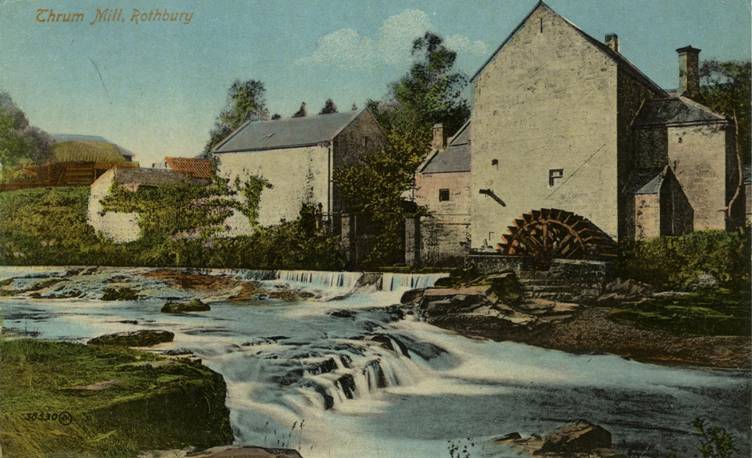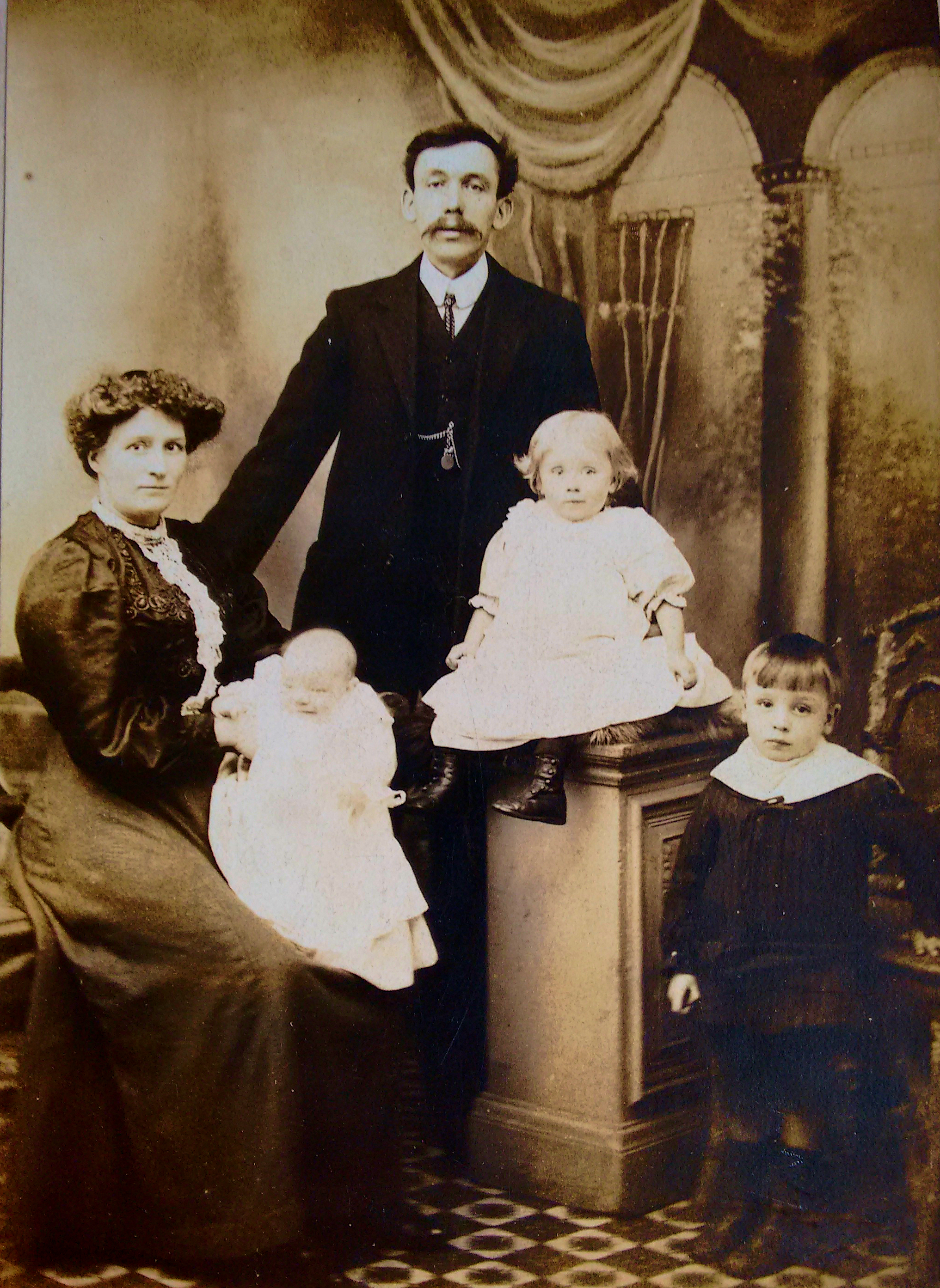Stoker Wilson's Family History Page
The Coxons of Coquetdate
The website for the Family History of Stoker & Lynn Wilson
The Coxon Family
The family history of my Coxon ancestors is complicated because there are two Coxon lines of descent. So far no relationship between the two lines has been found. (See the descendant charts for the two lines).
One line springs from Henry Coxon (c1675). He was born near Brandon in north Northumberland, and there were numerous Coxons in the Whitingham/Edlingham area.
The other is from Anthony Coxon (c1700) who lived, and was probably born at Woolaw farm in Redesdale, Northumberland. The researches of W Percy Hedley of Simonburn show there were Coxons at Woolaw for many generations, and he lists a number who lived between about 1520 and 1800.
Early Coxons - some speculations!
A George Cockson was arrested by the Warden of the Marches in 1569 as "an aider and abetter of the rebels". In 1604 it was recorded that a Thomas Cockson took over the tenancy of Woolawe from Matthew his father. In 1618 a George Coxon was listed in a Rental Roll with Thomas. They each paid equal shares of 2s. 3d, and it's probable that they were brothers. The next Coxon was Matthew Coxon who was "returned" by the Commonwealth officials as a suspected Royalist, and who died in 1695, possibly a son of Thomas or George. Anthony was buried in 1697, just two years later, and may have been brother to Matthew.
Coxon Documents
A page of links to various Coxon documents supporting this family history, including transcripts of W Percy Hedleys writings.
Click here]
George Coxon married Sarah Hedley in 1697 and William Coxon died in 1723. Since these are of the same generation they may have been brothers. Anthony Coxon, who married Jane Brown in 1731, may have been the son of George or William, but unfortunately there are no baptismal records linking Anthony with his forefathers. We do have baptismal records for his children, George (1732), Anne (1734), William (1736), Joseph (1737) and Thomas (1739).
We don't know how all these were related, but the common factor is Woolaw farm and we can make some educated guesses about how the generations fit together. (I have made some assumptions about relationships in this record, purely as a means of holding them together). If our Coxon line is descended from the Coxons of Redesdale, then we have some colourful characters as our forebears.
It is thought that Anthony's son William(1736) moved eastwards into Coquetdale, where he was miller at Overgrass Mill near Felton for a some years, dying at Greens farm nearby. Here again there is some uncertainty, in that we can't be absolutely certain that the William of Overgrass was the William born to Anthony, but ages match to within a couple of years, their presbyterianism is a strong indicator and I think and the balance of probabilities is high.
The two Coxon lines come together with the marriage of Isaac from Henry's side and Eleanor from William's side in 1793.
The Coxon family line is also complicated by the marriage of two cousins in Anthony's line. Susannah Coxon married her cousin Henry Coxon. You'll see how that works out below.
The Coxons as millers

By the time of the 19th century the Coxons were a numerous and probably prosperous community of farmers and millers along the banks of the river Coquet, which runs from the Cheviot Hills in the west of Northumberland to the North Sea at Warkworth. We can trace their occupancy of numerous mills at this time in this area. In this part of the world nearly all mills were water powered and therefore situated by streams.
Their spiritual home was focused on the Presbyterian church in Longframlington, though various members also belonged to the Presbyterian churches at Warkworth (The Scotch Church) and Thropton. Many of their records are found within Longframlington Church registers, and there are some notable gravestones in the churchyard at Longframlington and Felton.
John Coxon (1841-1908) was my Great Grandfather. From him all the earlier generations of Coxons in my family history can be traced. He was born in February 1841 at Stanton Mill several miles west of Longhorsely, and now a ruin. By the time of the national census in June of that year, and only a few months old, he had moved with his father Henry (1800-1851)and the family to Houndene mill near Warkworth. He seems to have spent his childhood there, (he is listed in the 1851 census), but by 1861 at the age of 20, probably after the death of his parents, he had moved south and was working with his maternal uncles Robert (1808-1891) and George (1812-1871) on a farm just outside of Dinnington. There he met his wife, Elizabeth Bell, continued in farming, and then some time between 1881 and 1891 he moved to Newbiggin by the Sea where he died in 1908.

One of John's sons was Robert, my grandfather, who was born at Dinnington, but lived for most of his life at Newbiggin by the Sea. Robert married Mary Gordon, my maternal grandmother. Robert died long before I was born, but I well remember my Grandmother and the wonderful loaves she made on the coal fire oven in the living room.
Working back from John
Working back a generation, Henry (1800-1851), John's father and my 2xGreat-Grandfather, was born at Stanton Mill in 1800 and lived and worked there for 41 years until the Spring of 1841. Now Henry's wife Susannah (1804-1851) was also a Coxon, as previously explained, in fact they were cousins. If you look at the family tree you will see that Henry & Susannah shared the same grandparents, William (1736-1824) & Susannah (1736-1826).
Susannah's family was into milling in a big way! She was born at Weldon Mill, on the banks of the Coquet just south of Longframlington whilst her father John (1767-1833) was miller there from about 1794 to his death in 1833. he seems to have been a very wealthy man; In his will he "left goods and chattels worth 600 pounds", a very considerable sum of money in 1833!
In the same generation as Susannah and Henry, her brother William (1796-1828), the eldest sibling who died aged just 32, worked at the mill at Weldon Bridge. Brother John (1798-1873) may have continued as a miller (a "John Coxon of Kirkley Mill" is recorded on a Gravestone). Brother Thomas (1799-1881) continued at Weldon Mill until the death of his father in 1833, and then continued in farming at Edlingham and Feltham. Brothers Robert & George (possibly on the strength of an inheritance?) took over South East Mason Farm near Dinnington, and were joined by nephew John.
Moving back in time another generation along Susannah's line, her father, John (1767-1833) my 3xGreat-Grandfather, was born at Overgrass Mill, some miles north of Felton, before moving as we have already seen, to the mill at Weldon Bridge. Amongst his brothers William (1770-1844) was miller at the Thrum mill, Rothbury, from 1807 to 1844, where he died He was a prominent member of the Presbyterian Church at Thropton. Incidentally William's son, William (1808-1839), was born and died at the Thrum mill. And yet his son, another William (1832 -), is to be found with his wife Elizabeth at Brinkburn in 1861 and at Plessey Mill, Stannington in 1871.
Eleanor (1770-1823), sister to the brothers above, married an Isaac Coxon (1764-1829) from the other Coxon line. They became the parents of Henry (1800-1851) and they appeared to have taken over Stanton Mill. Brother Robert (1774-1851) continued at Overgrass and died nearby. Brother George (1775-1851) became an innkeeper at Alnwick.
We can trace the milling link back another generation. We've already noted that William (1736-1824), my 4xGreat-Grandfather, was miller at Overgras mill, where he worked for 56 years. He seems to have remained there until his death in 1824.
There are other family links with mills throughtout the area, for example there were Coxons at Cartington Blue Mill just north of Thropton.
All these names, times and places are no doubt confusing, but enough has been said to show how prominent the Coxons were in milling circles at this time. From at least 1767 through to 1851 there were Coxons in the Coquetdale mills.
By the middle of the nineteenth century water and wind power were giving way to steam, and other industrial developments were eroding the work of the traditional mill. The industrial roller mill was introduced into Britain in 1880,. Originally designed by a Swiss, named Helfenburger, the first roller mills were actually built in Hungary in 1874. This newer method of milling crushed the grain between a series of fluted metal rollers, and could cope far better with the increased demands for flour as the population increased. Imports of cheap grain from the North American continent meant that small local mills were being increasing non viable. Vast numbers of the windmills and watermills which had served for hundreds of years, were demolished, or left to rot. So towards the end on the 19th century we see the slow drift of the Coxons away from their county roots to the urbanised areas, some of them into coal mining, a growing industry in the mid nineteenth century.